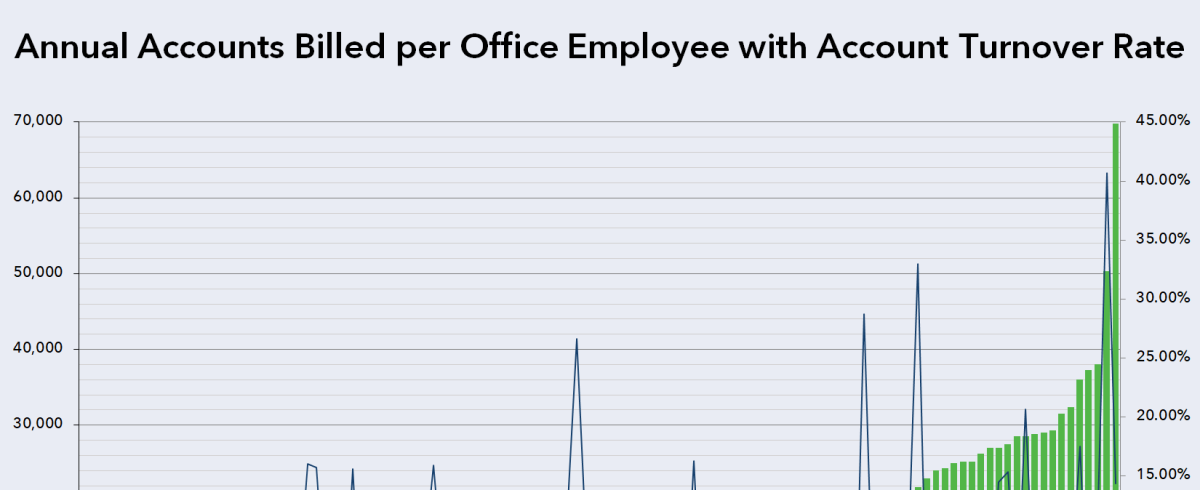For the past few months, I’ve been conducting the 2020 Utility Staffing Survey. This survey has become a biennial survey, alternating years with the Utility Fee Survey. The initial Utility Staffing Survey was in 2016 and, for sake of comparison, here are the results from that survey and the 2018 Utility Staffing Survey:
This is the first of two blog issues publishing the results of the 2020 Utility Staffing Survey. Today, we’ll examine demographics of the survey respondents, staffing levels, and factors outside the control of the utilities. In two weeks, we’ll review staffing levels and practices each utility can control, such as such as payment processing and bill printing.
Demographics of survey respondents
116 utilities (up from 82 in 2018, a 41.5% increase), representing 20 states, ranging in size from 232 to 285,000 active accounts participated in the survey. Click on the links below to see charts of the various demographic data for the survey respondents:
- Number of responses by state
- Size of utilities responding
- Size of utilities under 20,000 accounts responding
- Types of utilities responding
- Services provided by responding utilities
- Positions of individuals completing survey
Accounts per employee
To arrive at an accurate index to compare utilities of differing sizes and billing frequencies, I derived a value for the number of accounts billed annually per employee. This formula multiplied the number of active accounts by the number of times each account is billed annually (12 for monthly billing, 6 for bi-monthly billing, 4 for quarterly billing) then divided that product by the total number of office employees. The higher the result, the more efficient the office is considered to be.
Surprisingly, two utilities this year were more efficient than the most efficient utilities in either 2016 or 2018. The results ranged from 408 to 69,818 as represented by the graph below: (clicking on any of the graphs will open a larger image in a new window).
If you’re playing along at home and would like to calculate your utility’s Annual Accounts Billed per Office Employee value, I’ve created an online calculator to determine this value. Please click here to calculate your utility’s value.
Annual customer turnover
As with past surveys, I wondered if the turnover in customers would be a factor in how efficiently offices are staffed, so the survey asked how many applications for service (including routine move in/move outs and new construction) each utility processes per year.
Some utilities bill only property owners, and those will have a much lower turnover rate than utilities that bill tenants.
Not surprisingly, the annual turnover rates ranged widely, from .01% to 40.66%. I have a suspicion that some of the turnover rates may be artificially low because respondents may have interpreted the question to only include new construction. (I’ve made a note to myself to include a more verbose explanation for this question in 2022!)
Interestingly, the second most efficiently staffed office has the highest annual turnover rate!
Major services billed
The final variable I examined for this issue was major services billed (water, sewer, electric, and natural gas) looking for a correlation between the number of services billed and office staffing. I only considered the major services, because other services, such as garbage, stormwater, or area lights, generally are billed as flat-rate services and are not nearly as labor-intensive to bill.
As was the case in 2016 and 2018, utilities billing multiple metered services require more staff than those billing for only a single metered service. This was even more convincing this year, as 37 of the 38 most efficient offices (including the top 25) bill for only one metered service or less (one bills for sewer only), as shown below:
Next issue
The next issue will analyze staffing levels and labor-saving practices each utility can control, such as automation and outsourcing.






